Review: Garneau Gros Louis 1 fat bike
Big tires transform snow-bound singletrack into a winter playground
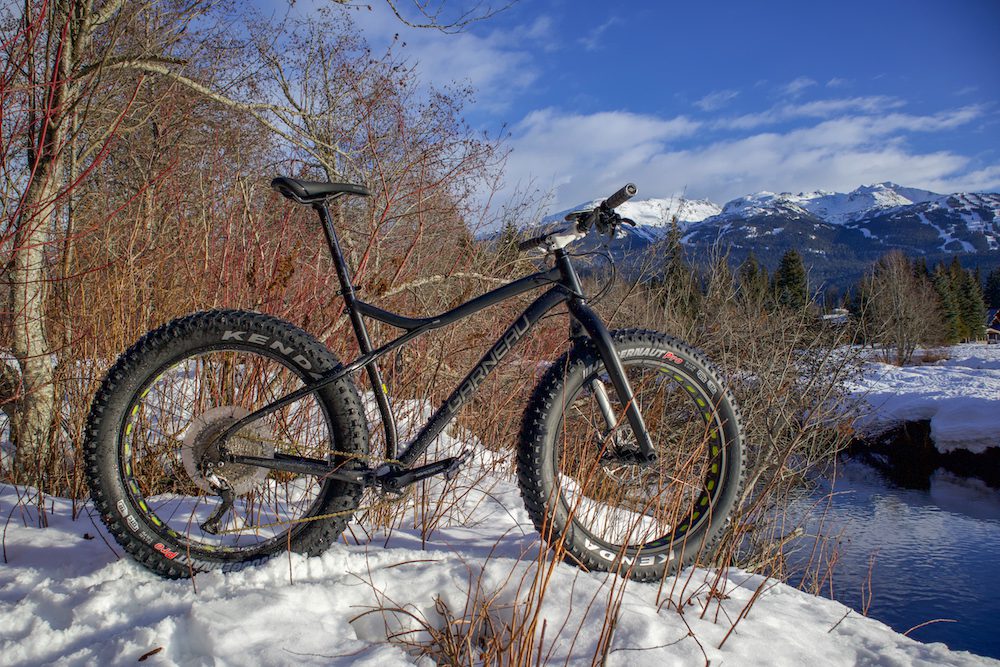
by Stuart Kernaghan
Fat bikes – typically, mountain bike hardtails with super wide knobby tires that are designed to be ridden on snow or sand – are undeniably a niche market product. Sure, there will be exceptions, but you’re most likely to see them cruising snowy trails here in the Great White North.
The idea behind fat bikes is straightforward: wider tires make for a larger contact area, enabling rider and bike to float above the snow rather than sinking down into it. All of my previous winter riding experiences have been on regular-width tires and involved sinking into the snow, pushing the bike both uphill and down, and a lot of sweating and swearing, so when I got the opportunity to try a fat bike, I was pretty excited. Riding a bike that would get me out on the trails year round but not drive me crazy in the process sounded great to me. Bring on the snowy singletrack!
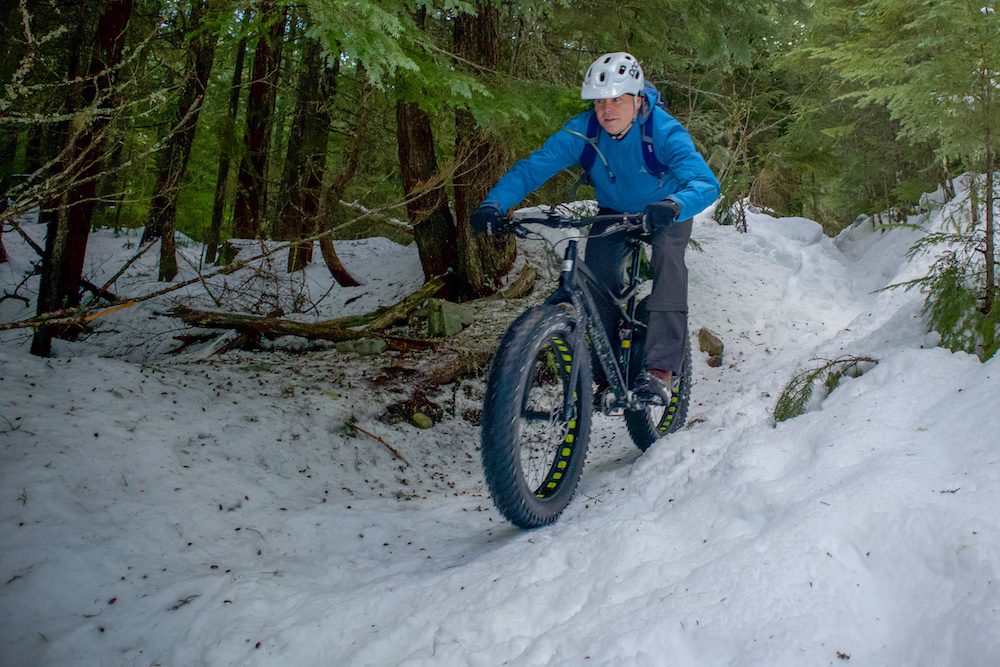
Spec – Garneau Gros Louis 1
I was able to spend a couple of months on a Garneau Gros Louis 1 fat bike, and the experience has turned me from a winter riding hater into a fan who’s looking to pick up his own fat bike. A well-spec’d test bike definitely helped with the conversion.
The Gros Louis 1 is the second bike in Garneau’s fat bike line. The matte black frame is made of S-6 LT aluminum and comes with a full carbon fork; both frame and fork have 197 mm wheel spacing (compare that to 148 mm for most mountain bike frames). Component highlights include a Race Face Aeffect crankset with a 28-tooth chainring and Race Face bottom bracket, SRAM Guide RS brakes with 180 mm / 160 mm rotors, a Shimano SL-M7000 shift lever paired with an SLX Shadow Plus rear derailleur, a Sugek 11-46T 11-speed cassette and a KMC X11 chain. The wheels are KT hubs mounted on tubeless-ready 32-hole HJC MP80 rims, with Kenda Juggernaut 26 x 4.8” rubber. The saddle is by Garneau, while the bar and stem are from Caribou. Total weight for a size XL bike with pedals was just a little over 35 lbs.

The ride experience
As it turns out, riding the right bike for the conditions makes the whole winter riding experience a hell of a lot of fun. As you might guess, wide tires are the key. It took literally about 10 seconds on the fat bike to realize that 4.8” rubber that lets you cruise along on top of the snow rather than sinking into it, transforming winter riding from a giant pain in the ass to something that’s actually enjoyable. And with that, a whole new world of riding opened up.
I put in a fair number of miles riding the Gros Louis in Squamish, Whistler, Pemberton and even my favourite trails on Vancouver’s North Shore. The first thing I discovered was that the Gros Louis was very capable of handling every situation that I threw at it: long climbs littered with tight switchbacks, flowy technical singletrack and flat valley trails were all on the menu when the white stuff started flying. The Gros Louis is a very competent generalist, meaning that it was comfortable in every situation but didn’t necessarily excel in any particular respect – which isn’t quite as common as you may think.
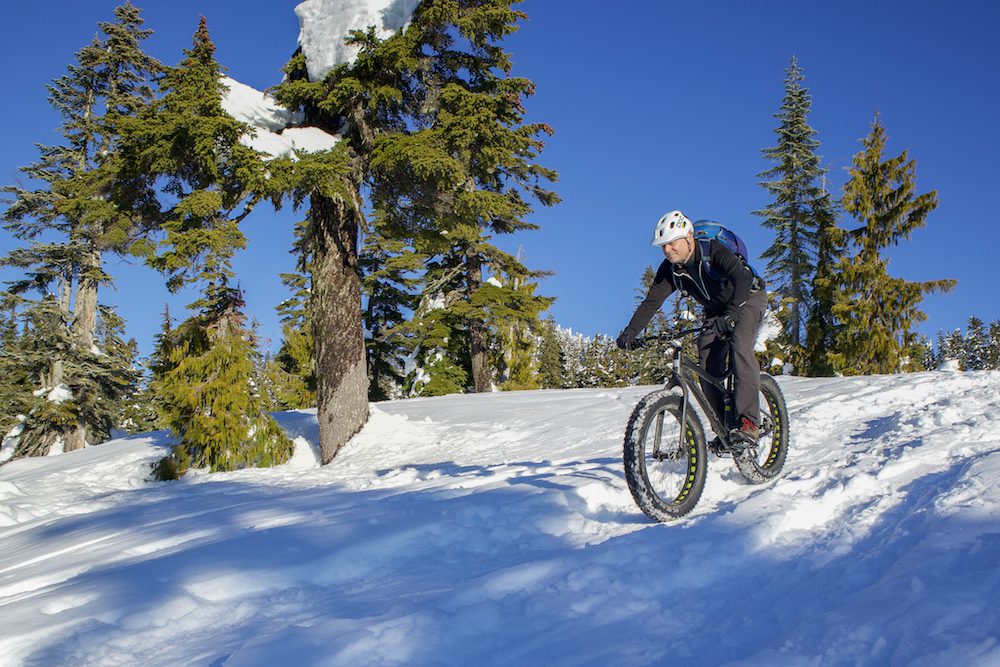
RELATED: A mountain biker’s first fatbike ride
The 69 degree head angle is on the steeper end of the spectrum, so handling is reasonably snappy even with the larger tires. The 73.5 degree seat tube angle puts riders in a good position over the bottom bracket, without making for a cramped cockpit. Climbing as a whole wasn’t exactly lightning fast, but you can’t really expect that on a bike that weighs 35 lbs. Descending was a lot more enjoyable, especially on technical singletrack where I could let the bike carry some speed.
Initially, I was concerned that riding a fully rigid bike would be a little rough but it didn’t take long to realize out that the snow fills in holes on a trail that would normally require a suspension fork to smooth out. There were a few times where suspension would have been handy, but for the most part, it was only a nice-to-have rather than a need-to-have. I was also wondering what it would be like riding on 26” wheels, but the roots, rocks and trail ruts that might make for a rough ride on smaller wheels aren’t much of an issue when you’ve got 4.8” tires and snow on the trail.
Tires and rims are wider on a fat bike, which means you also have a wider rear triangle and bottom bracket. It took a couple of rides to get used to a wider stance and I initially had more heel rub on the rear stays, until I got used to the new foot positioning. Riding with flat pedals helped considerably.

Thoughts on the spec
I was pleasantly surprised at the performance of the components on the Gros Louis. The only things that I swapped out were stem and seatpost, which were a little short for my long arms and legs. The 1 x 11 drivetrain worked well until I managed to bend the each of the top three cogs on the cassette. Garneau chalked that up to a quality control issue with the Sugek cassette and replaced it with a Shimano SLX cassette, which worked fine for the remainder of the test.
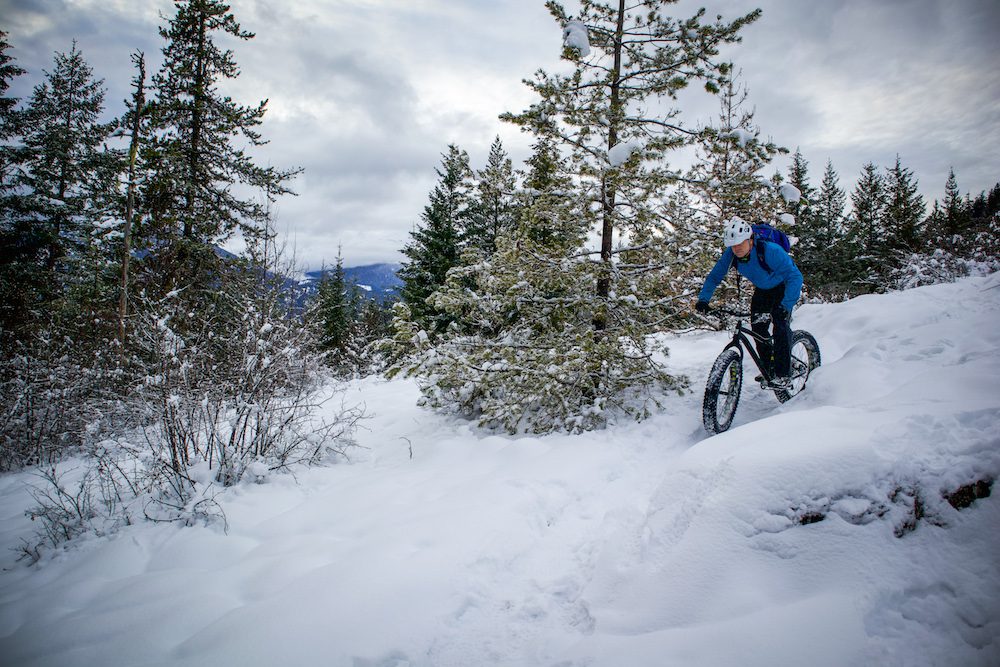
Once that was sorted out, the 28-tooth chainring paired well with the 11-46 cassette, and I never felt like I needed a lower gear. The 180 mm / 160 mm rotor combination was a little undersized for a bike that weighs this much; I would have preferred to see twin 180 mm rotors.
The Gros Louis test bike came with Kenda Juggernaut 26” x 4.8” tires, which provided highly predictable traction on both snow and ice. I ended up running the Kendas at around 7 psi most of the time, which worked well for my 215 lbs., but I did drop the pressure down to about 5.5 psi on slushy or icy days; that small change made a huge difference in traction.
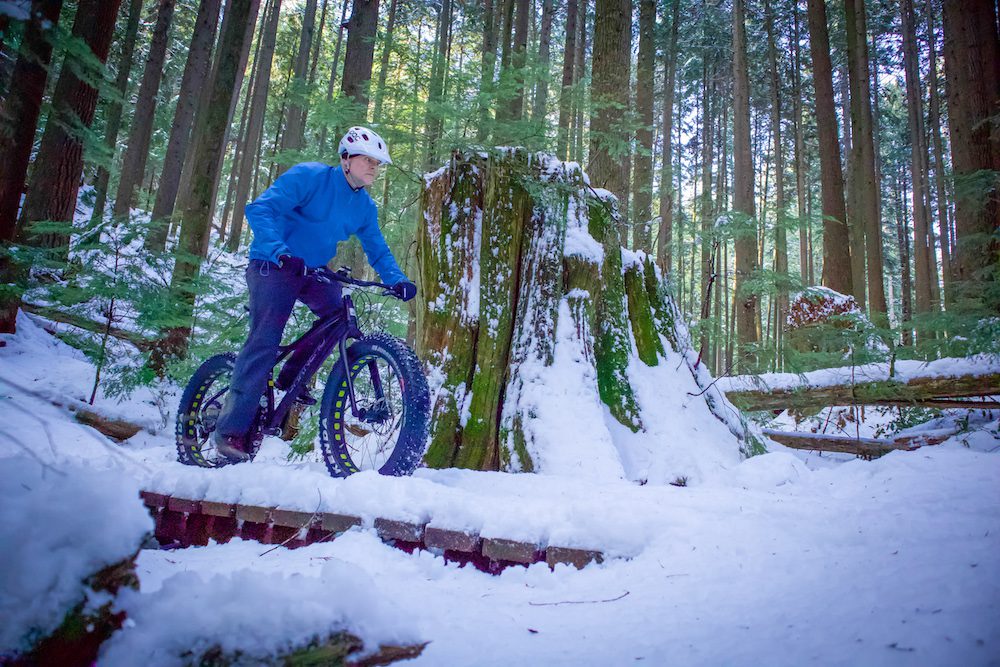
Overall thoughts
The best part about riding a fat bike in the snow was that I wasn’t fighting the bike or the conditions during the ride. I wasn’t sinking into the snow because my tires were too skinny to hold me up, and I wasn’t slipping or sliding all over the place. I was able to sit above the crust, or plow my way through fresh snow, rather than struggling to find traction or even keep the pedals spinning. Riding a fat bike on snow was a transformative experience, and I’m planning on adding one to my quiver.
Fat biking likely isn’t going to be a sport for everyone, especially if you’re not a fan of cold weather. But if you’re looking to keep the pedals spinning year round and don’t really fancy the idea of spending a lot of time on a stationary trainer, then it’s worth picking up a fat bike. Given the $2,400 price tag for the Garneau Gros Louis 1, it’s hard to say no to this bike.

